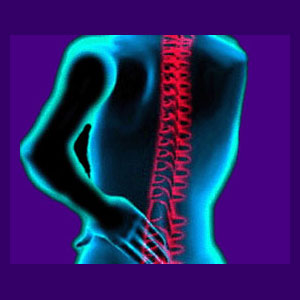
Spinal joint pain is also referred to as spinal osteoarthritis or facet syndrome, depending on where it may occur. Pain in the vertebral joints is an occasional symptom suffered by patients as they get older, although it is certainly not an exclusive diagnosis of the elderly. Right from the start, it is of paramount importance to recognize that many incorrectly diagnosed pain syndromes are often attributed to facet joint causations. It must be made absolutely clear that accepted medical research shows no direct link between typical facet arthrosis and the incidence of painful symptoms in the back or neck.
This article will focus on pain in the facet joints of the spinal column. We will detail why pain might occur and the best ways to manage and cure these symptoms with the least risk.
Spinal Joint Pain Circumstances
Let’s start with the less traveled path in this article:
One of the more common types of pain in the spinal joints is not sourced by any structural degeneration. Instead, these symptoms are actually a form of psychological back pain. The patient typically displays a personality type that is prone to mindbody conditions and is also coincidentally diagnosed with some form of degenerative process in the spine.
These arthritic changes are completely normal for most people to acquire as they age, but the underlying psychoemotional reason for the pain will use the diagnosis as a convincing structural cover. This way, there will be no suspicion that the pain is due to anything but a physical process in the joints themselves. The diagnostic nocebo effect gives the psychological imperative a trigger to start in some patients and worsens existing pain in others. This usually begins a long battle with chronic back or neck pain.
Medical science is ill equipped to deal with psychosomatic disorders, so the patient will rarely find lasting facet joint pain relief. This process of mindbody interaction is well detailed in the work of Dr. John E. Sarno and many other professionals in this exciting sector of non-traditional healthcare.
It is also very possible to have spinal joint pain due to a completely physical reason. Spine injuries and degenerative processes can cause moderate to severe discomfort in the spinal joints of some unfortunate patients. The reason for pain in these cases can be studied in detail in my section covering facet joint syndrome.
Painful Spinal Joints
The spine is a complicated structure with several types of tissue controlling many moving parts. It is a rugged structure, despite its complexity and reputation as a target for many disorders. The spinal column suffers from several degenerative processes as a normal part of its lifespan. These processes can be more pronounced in certain individuals and can cause some discomfort.
The vast majority of people will not suffer any significant physically-induced pain in their spinal joints, despite mild to moderate degeneration. However, these patients are still at risk for psychosomatic pain, which may use this joint deterioration as a convincing smokescreen.
Learn the facts about spinal joint degeneration before setting yourself on any definite path towards treatment. Knowledge is power. If the facts of your diagnosis do not make sense, or if you have endured unresolved back pain despite many attempts at treatment, there is a good chance that your diagnosis is incorrect.
Misdiagnosis of common back and neck pain is one of the primary sources of the back pain epidemic that is spreading at an alarming rate. Make sure to get a second opinion from an objective doctor if something seems amiss in the diagnostic or treatment processes. Remember, if pain is due to a mindbody origin, then considering knowledge therapy is a cost-free and risk-free path towards possible relief embraced by millions worldwide.




